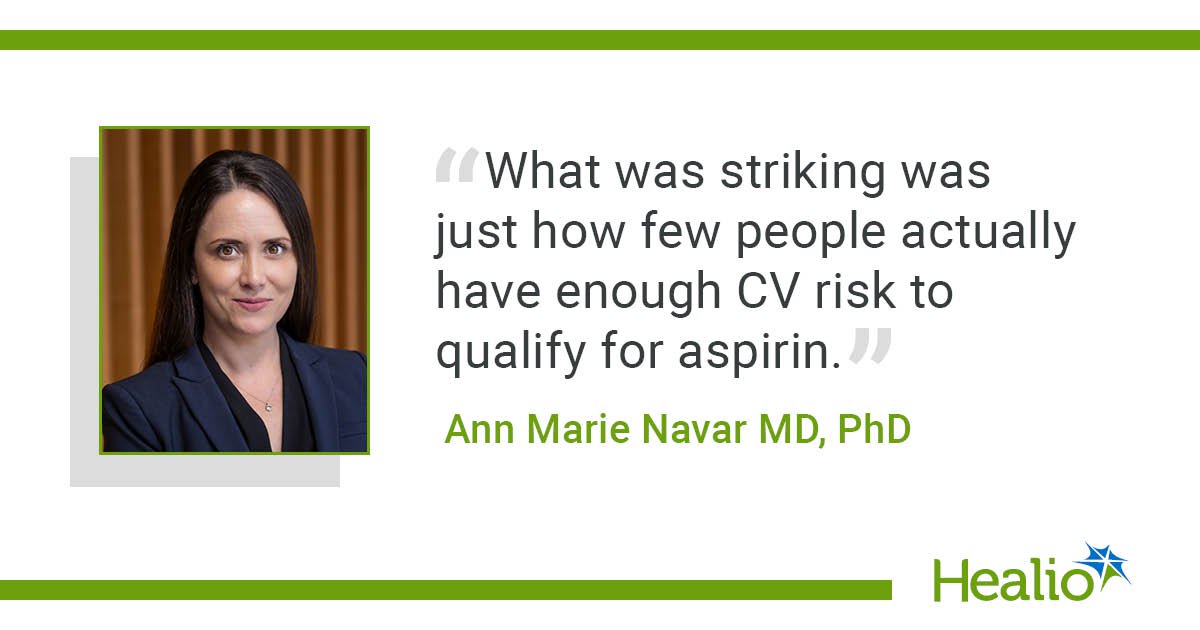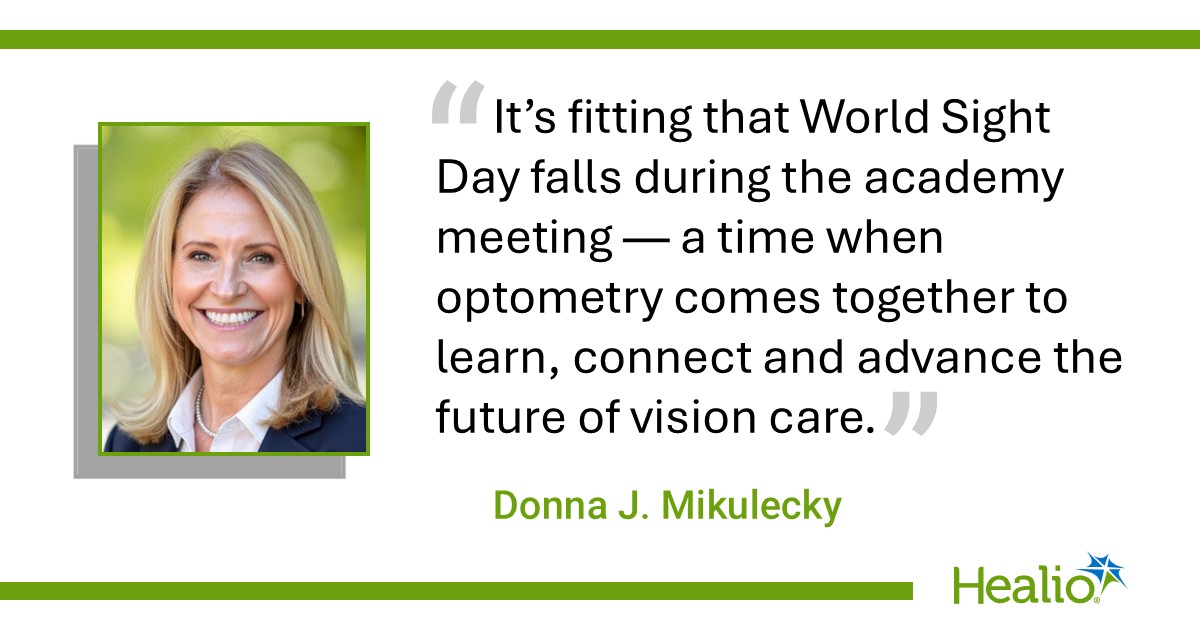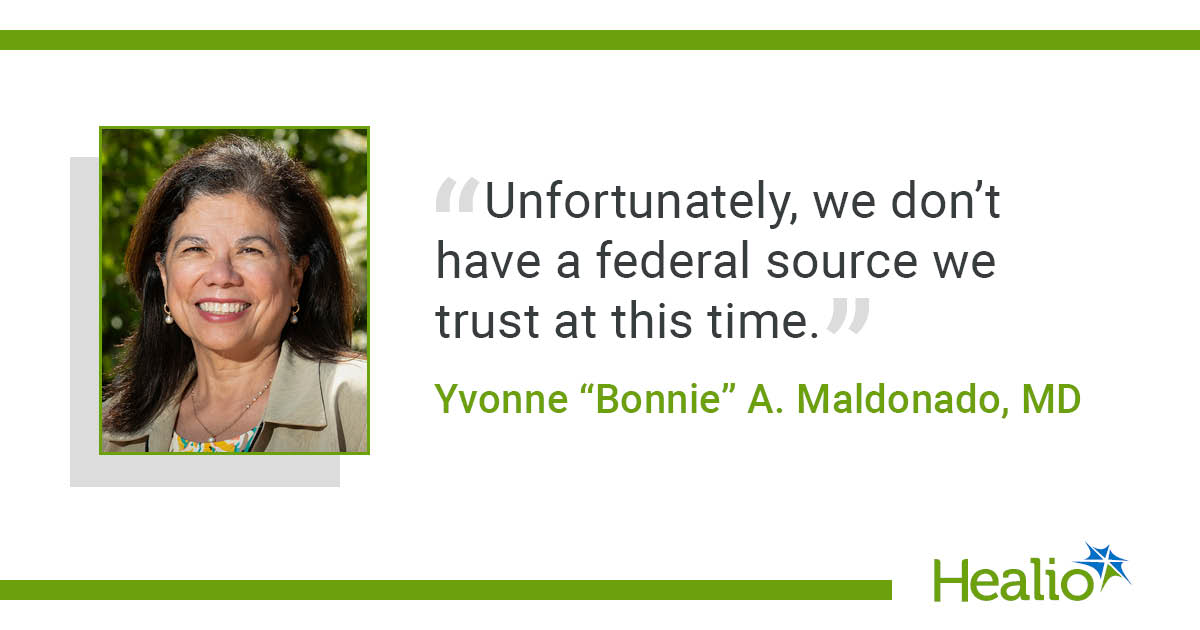October 03, 2025
2 min read
Key takeaways:
- The PREVENT equation may more accurately guide aspirin initiation vs. the Pooled Cohort Equations.
- Many patients deemed aspirin-eligible via Pooled Cohort Equations were ineligible with PREVENT.
Use of the Pooled Cohort Equations to guide aspirin initiation may overestimate 10-year atherosclerotic CVD risk compared with the newer PREVENT equation, researchers reported.
As Healio previously reported, the PREVENT equations were derived from real-world datasets of more than 6 million adults, and include risk for heart failure, myocardial infarction and stroke; omit race; include traditional CVD risk factors for heart disease in addition to kidney function; and take into consideration social determinants of health, blood glucose and kidney function, when clinically available.

A study evaluating the use of the PREVENT equation to guide aspirin initiation, representative of 59.4 million adults, was published in JAMA Internal Medicine.
“Risk equations are used largely in the cholesterol guidelines, but also to guide BP management and to a lesser extent for aspirin. For aspirin it may actually be most relevant because there’s a much clearer trade-off between risks and benefits,” Ann Marie Navar MD, PhD, associate professor of medicine (cardiology) at UT Southwestern Medical School, told Healio. “We’ve actually known that the Pooled Cohort Equations overestimated risk for CVD for some time. It wasn’t surprising to us to see if we used the same threshold as before with a better calibrated equation — PREVENT — that fewer individuals would be considered at high enough risk for aspirin. What was striking was just how few people actually have enough CV risk to qualify for aspirin, especially considering how many people are already using it for primary prevention without a clear indication.”
To better understand the potential impact of the PREVENT equations on aspirin prescription, researchers analyzed data from the 2015 to 2020 National Health and Nutrition Examination Survey and assessed 3,158 participants’ 10-year ASCVD risk and statin eligibility using the Pooled Cohort Equations vs. PREVENT (mean age, 49 years; 52% women). Statin eligibility was defined as 10-year ASCVD risk of 10% or more.
Survey respondents with risk factors for major bleeding events were excluded from the analysis.
Overall, 8.3% of respondents, representative of 4.9 million adults, were eligible for aspirin as determined by the Pooled Cohort Equations, whereas 1.2%, representative of 700,000 adults, were eligible based on PREVENT.
The researchers subsequently reevaluated adults deemed eligible per the Pooled Cohort Equations and determined that 85.9% (95% CI, 81.5%-89.4%), or 4.2 million adults, were not eligible per PREVENT.
In a subanalysis of the 12.9% of NHANES participants who reported aspirin use at baseline, representing 7.6 million adults, researchers reported 96.9% did not meet ASCVD risk criteria based on the PREVENT equation (95% CI, 95.1%-98.1%).
“Given the risks of bleeding with aspirin and the weak evidence for it in primary prevention, we hope that these results help people reassess whether they are truly benefiting from aspirin, or if perhaps there are better ways for them to lower their risk of heart disease, like focusing on cholesterol or BP,” Navar told Healio.
For more information:
Ann Marie Navar MD, PhD, can be reached at cardiology@healio.com.










